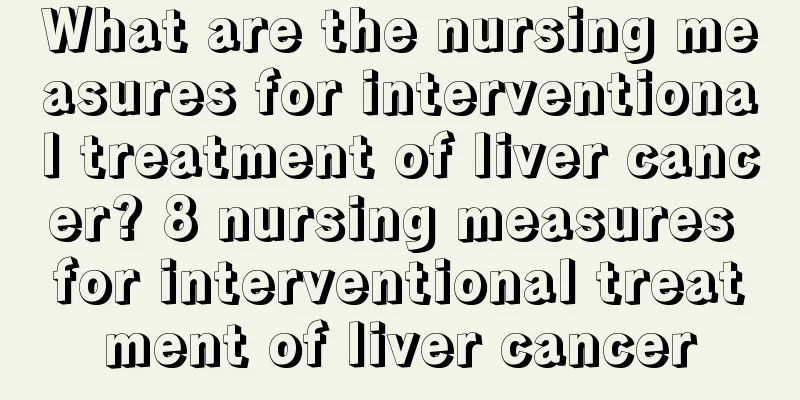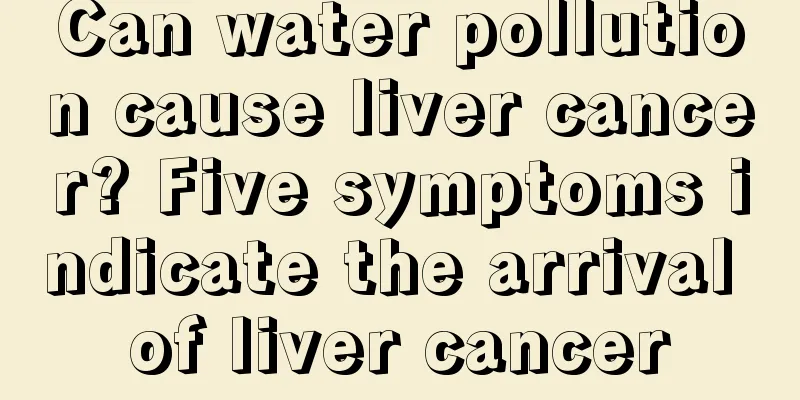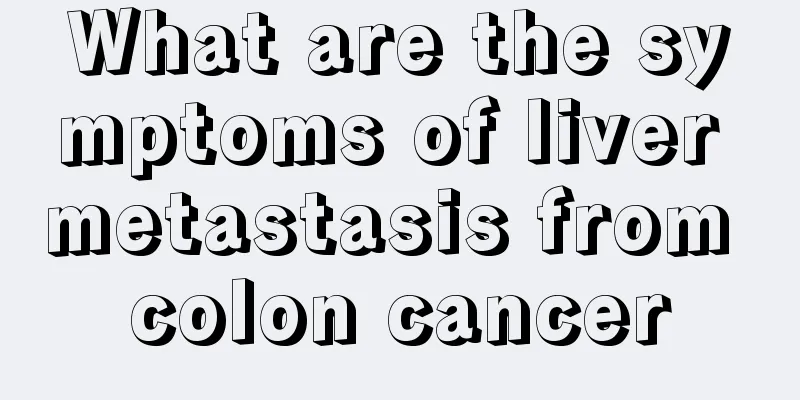What are the nursing measures for interventional treatment of liver cancer? 8 nursing measures for interventional treatment of liver cancer

|
Interventional treatment care is mainly performed by professional medical staff, and family members just need to cooperate as much as possible. However, interventional treatment for liver cancer is painful and has side effects. Because interventional treatment also requires the infusion of chemotherapy drugs, it will have toxic side effects similar to systemic chemotherapy. Clinically, patients are generally recommended to take Chinese medicine to improve this situation. Its effect of reducing the toxic side effects of radiotherapy and chemotherapy and reducing the dosage of chemotherapy drugs has been confirmed. General nursing methods for interventional treatment of liver cancer are as follows: 1. Strengthen inspections, closely observe changes in the condition and monitor vital signs. After interventional treatment, patients should lie flat, keep the bed sheets flat and comfortable, and observe whether the wound has bleeding or hematoma formation. Continuously monitor the ECG for 24 hours, observe changes in heart rate, heart rhythm, and blood pressure, measure body temperature 4 times a day, and report any abnormalities to the doctor in a timely manner. 2. Care of the puncture site and the affected limb: Interventional treatment is an invasive procedure. Local puncture and catheterization can damage the artery. In addition, the coagulation factor of liver cancer patients is reduced. Therefore, the postoperative care of the puncture site should be strengthened. The wound should be pressurized with a sandbag for 4 to 6 hours. The patient should rest in bed for 12 hours and the affected limb should be extended and immobilized for 12 hours. To relieve the back pain caused by lying flat, the patient can turn over to the affected side 40 degrees. Closely observe the bleeding and hematoma at the puncture site, the blood circulation of the lower limbs, the pulsation of the dorsalis pedis artery, and the skin color, temperature, and sensation. Inform the patient to avoid actions that increase negative pressure, such as sneezing. When coughing, the patient should press the puncture site with his hands to prevent bleeding. If the toe tip is pale, the calf is in severe pain, the skin temperature drops, and the sensation is dull, it indicates the possibility of femoral artery embolism. 3. Pain care: The peak period is 4 to 14 hours after the operation, which is related to the ischemic necrosis of cancerous tissue after embolization, which causes liver edema and increased tension of the liver capsule. The pain is mostly located in the liver area and upper abdomen. Tell the patient not to be nervous. If necessary, follow the doctor's advice to give pain relief, such as intramuscular injection of 100 mg of strong analgesic. Hot compress is strictly prohibited. 4. Fever care: Fever is the most common reaction to interventional therapy and is related to the necrosis of tumor tissue cells after embolization. There will be varying degrees of fever 3 to 7 days after surgery. If the body temperature exceeds 38°C, give a warm water bath and place an ice pack on the head for physical cooling. If the body temperature exceeds 39°C, give antipyretic drugs as prescribed by the doctor. Tell the patient to drink more water. Change clothes frequently and keep the skin clean and dry. 5. Care for gastrointestinal reactions: Due to the toxic effects of anticancer drugs and the reflux of some embolic agents into the duodenal gastrointestinal artery, which damages it, the gastrointestinal tract is stimulated and causes a stress reaction, which may cause nausea and vomiting, even hematemesis, black stools, etc. Carefully observe the color, quantity and characteristics of the patient's vomitus. If there is any abnormality, report it to the doctor in time, give antiemetic symptomatic supportive treatment, and eat light, easily digestible semi-liquid food and vegetables one week after surgery to prevent constipation. Increase nutrition after one week to improve immunity and protect liver function. Encourage them to eat a high-protein, high-calorie, vitamin-rich diet to promote recovery. 6. Postoperative psychological care: Various discomforts after surgery will bring psychological burden to patients. First of all, establish a harmonious nurse-patient relationship, communicate more with patients at work, and infect patients with sincerity, enthusiasm, optimism and self-confidence, and a serious work attitude, so that they can gain psychological security and trust. Create a comfortable treatment environment for them, keep the ward quiet and tidy, the air clear, and the color soft to stimulate the patient's positive emotions. Coordinate the relationship between patients, understand, care and encourage each other, and improve the level of family and social support for patients, so as to build the patient's confidence in overcoming the disease. |
<<: What are the common early symptoms of lung cancer? Five common early symptoms of lung cancer
>>: What are the 7 differential diagnosis methods for liver cancer?
Recommend
What are the categories of MRI contrast agents?
People often hear the term magnetic resonance. Th...
Is the blood from the lower body caused by cervical cancer contagious?
Cancer is not contagious, don't worry. It won...
Stomach disease, black stool
There are still many misunderstandings about stom...
What is nonspecific costochondritis and how to treat it
What we usually call costochondritis is specific ...
What are the symptoms of nasopharyngeal cancer at the beginning
The symptoms of nasopharyngeal carcinoma vary fro...
What are the symptoms of rabies?
Rabies does not necessarily occur after being bit...
Can colorectal ultrasound detect colorectal cancer?
With the improvement of living standards, the qua...
Smoking and lack of water lead to bladder cancer. To prevent bladder cancer, you need to change your habits
Bladder cancer is a disease we often hear about i...
What are the folk remedies for treating kidney cancer
The occurrence of kidney cancer will have a great...
What can a routine stool examination reveal?
The state of stool is an important indicator of p...
Can rectal cancer surgery preserve the anus? When should I have a follow-up check after rectal cancer treatment
Rectal cancer refers to cancer that occurs betwee...
What are the sequelae of ovarian tumor surgery
We may still not know much about ovarian tumors. ...
What are the side effects of oxaliplatin?
Injection of oxaliplatin may cause anemia, leukop...
I lose 30 hairs every day when I wash my hair
Hair loss when washing hair is a problem that eve...
What are the symptoms of thyroid gland
The thyroid gland is a very important tissue for ...









